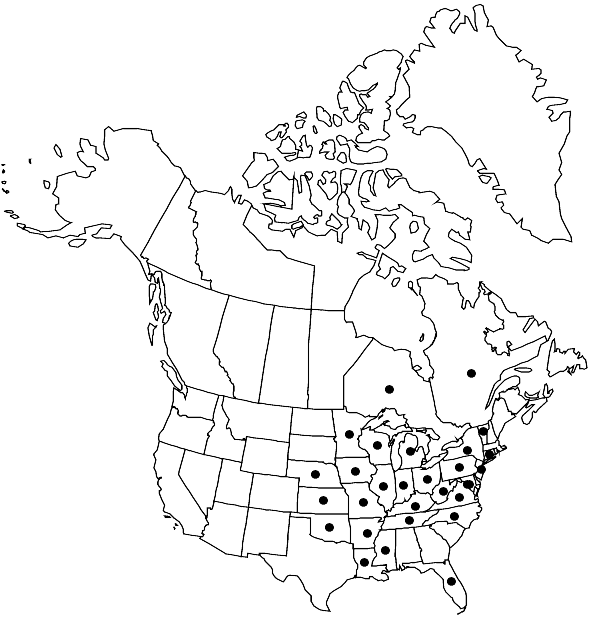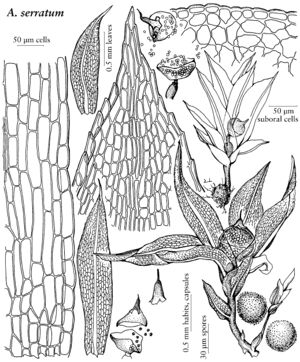Difference between revisions of "Aphanorrhegma serratum"
in A. Gray, Manual, 647. 1848,.
FNA>Volume Importer |
FNA>Volume Importer |
(No difference)
| |
Revision as of 21:51, 16 December 2019
Plants gregarious to scattered; leaves slightly twisted when dry; perichaetial leaves erect-spreading when dry, exposing the capsule.
Phenology: Capsules mature (Jul) Sep–Dec.
Habitat: Soil, clay, along creeks or trails in places subject to inundation, rarely among other mosses
Elevation: low to moderate elevations
Distribution

Ont., Que., Ark., Conn., D.C., Fla., Ill., Ind., Iowa, Kans., Ky., La., Md., Mich., Minn., Miss., Mo., Nebr., N.J., N.Y., N.C., Ohio, Okla., Pa., Tenn., Va., Vt., W.Va., Wis.
Discussion
Aphanorrhegma serratum resembles the sympatric Physcomitrella patens, from which it differs in its capsule’s regular line of dehiscence and collenchymatous exothecial cells; it also grows occasionally with Physcomitrium immersum. The latter two species are small and both have an immersed operculate capsule. Physcomitrium immersum is distinguished by a distal line of dehiscence (versus equatorial in A. serratum), the presence of an annulus of small cells, the thin-walled (versus collenchymatous) exothecial cells, and an urceolate rather than a globose operculate urn. Aphanorrhegma serratum has been reported from Texas by H. A. Crum and L. E. Anderson (1981). I have seen only one collection (Duke) from that state, but the specimen lacks collenchymatous exothecial cells, bears a distinct annulus, and hence is here referred to Physcomitrium immersum.
Selected References
None.
